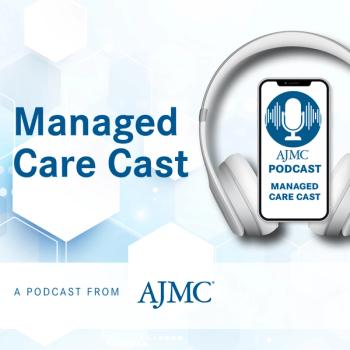
Exploring Amivantamab's Potential in Colorectal Cancer: Dirk Arnold, MD, PhD
Dirk Arnold, MD, PhD, medical director, Asklepios Tumour Biology Centre, discusses the trial design of a study comparing amivantamab with standard chemotherapy to potentially improve treatment outcomes.
The OrigAMI-2 study (
This transcript was lightly edited; captions were auto-generated.
Transcript
Given the known role of MET amplification in resistance to anti-EGFR therapy, will the study include biomarker analyses to evaluate MET status at baseline or during progression?
Like all trials in colorectal cancer and modern oncology, we have to do a massive biomarker evaluation of the patient to identify the patients who do benefit most. However, these are all exploratory.
The only biomarker which we use in the beginning is that patients have to have RAS wild type. We'll say KRAS, NRAS wild type, and BRAF wild type, determined by local testing. And patients have to be MSI [microsatellite instability]-negative. We'll say no microsatellite instability, because these patients may need other tumor treatments. And also they should not be HER2-positive.
How do you anticipate the subcutaneous administration of amivantamab might impact patient experience, adherence, or clinical workflow in real-world settings?
That's an interesting thing we have to learn. In addition, we will learn how this will be working and how this is anticipated by patients.
Well, overall adverse events coming from cetuximab IV [intravenous] should not be underrated or cannot be neglected. We'll say mostly that's mild to, in very rare cases, severe anaphylactic reactions. Whereas here, we have the more convenient subcutaneous administration and also are not bringing patients into the risk of suffering from adverse events from anaphylaxis.
So therefore, I'm curious to see how the objective toxicity profile will compare, as well as how patients' interpretation of the administration routes are.
With the choice of FOLFOX or FOLFIRI left to investigator discretion, how might this heterogeneity influence the interpretation of efficacy outcomes?
Well, that's a super pragmatic approach, because we have the feeling that the chemotherapy backbone does not really matter. So in fact, for cetuximab, we have seen similar efficacy of the anti-EGFR receptor antibody being given with FOLFOX or with FOLFIRI, and the same in the early-phase trial with amivantamab.
So therefore, it's an ultra-pragmatic approach to let the investigator choose which is the best treatment in relation to toxicity and also pre-treatment, pre-treatment, etc., for the patients. Therefore, we are not expecting major differences.
However, this is clearly a stratification factor, and also the analysis will clearly report both FOLFOX and FOLFIRI separately. But my guess, or my anticipation, is that there will not be a major difference between these chemotherapy arms.
Newsletter
Stay ahead of policy, cost, and value—subscribe to AJMC for expert insights at the intersection of clinical care and health economics.













































